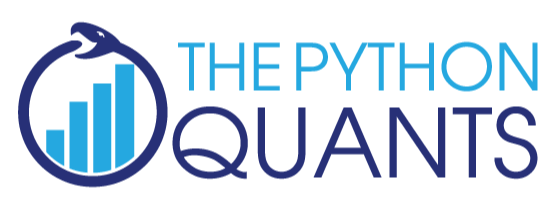
DX Analytics Library¶
Model Classes
The following models are available:
geometric_brownian_motion: Black-Scholes-Merton (1973) geometric Brownian motionjump_diffusion: Merton (1976) jump diffusionstoch_vol_jump_diffusion: Bates (1996) stochastic volatility jump diffusionsquare_root_diffusion: Cox-Ingersoll-Ross (1985) square-root diffusionsquare_root_jump_diffusion: square-root jump diffusionsquare_root_jump_diffusion_plus: square-root jump diffusion plus term structure
In [1]:
from dx import *
In [2]:
np.set_printoptions(precision=3)
In [3]:
r = constant_short_rate('r', 0.06)
geometric_brownian_motion¶
In [4]:
me = market_environment('me', dt.datetime(2015, 1, 1))
In [5]:
me.add_constant('initial_value', 36.)
me.add_constant('volatility', 0.2)
me.add_constant('final_date', dt.datetime(2015, 12, 31))
me.add_constant('currency', 'EUR')
me.add_constant('frequency', 'M')
# monthly frequency
me.add_constant('paths', 10000)
In [6]:
me.add_curve('discount_curve', r)
In [7]:
gbm = geometric_brownian_motion('gbm', me)
In [8]:
gbm.generate_time_grid()
In [9]:
gbm.time_grid
Out[9]:
In [10]:
paths = gbm.get_instrument_values()
In [11]:
paths[:, :2]
Out[11]:
In [12]:
%matplotlib inline
colormap='coolwarm'
lw=1.25
figsize=(8, 4)
legend=False
no_paths=10
In [13]:
pdf = pd.DataFrame(paths, index=gbm.time_grid)
In [14]:
pdf[pdf.columns[:no_paths]].plot(colormap=colormap, lw=lw,
figsize=figsize, legend=legend)
Out[14]:
jump_diffusion¶
In [15]:
me.add_constant('lambda', 0.7)
me.add_constant('mu', -0.8)
me.add_constant('delta', 0.1)
In [16]:
jd = jump_diffusion('jd', me)
In [17]:
paths = jd.get_instrument_values()
In [18]:
pdf = pd.DataFrame(paths, index=jd.time_grid)
In [19]:
pdf[pdf.columns[:no_paths]].plot(colormap=colormap, lw=lw,
figsize=figsize, legend=legend)
Out[19]:
stoch_vol_jump_diffusion¶
In [20]:
me.add_constant('rho', -.5)
me.add_constant('kappa', 2.5)
me.add_constant('theta', 0.1)
me.add_constant('vol_vol', 0.1)
In [21]:
svjd = stoch_vol_jump_diffusion('svjd', me)
In [22]:
paths = svjd.get_instrument_values()
In [23]:
pdf = pd.DataFrame(paths, index=svjd.time_grid)
In [24]:
# index level paths
pdf[pdf.columns[:no_paths]].plot(colormap=colormap, lw=lw,
figsize=figsize, legend=legend)
Out[24]:
In [25]:
vols = svjd.get_volatility_values()
In [26]:
pdf = pd.DataFrame(vols, index=svjd.time_grid)
In [27]:
# volatility paths
pdf[pdf.columns[:no_paths]].plot(colormap=colormap, lw=lw,
figsize=figsize, legend=legend)
Out[27]:
square_root_diffusion¶
In [28]:
# short rate like parameters
me.add_constant('initial_value', 0.05)
me.add_constant('volatility', 0.1)
me.add_constant('kappa', 2.5)
me.add_constant('theta', 0.01)
In [29]:
srd = square_root_diffusion('srd', me)
In [30]:
paths = srd.get_instrument_values()
In [31]:
pdf = pd.DataFrame(paths, index=srd.time_grid)
In [32]:
pdf[pdf.columns[:no_paths]].plot(colormap=colormap, lw=lw,
figsize=figsize, legend=legend)
Out[32]:
square_root_jump_diffusion¶
Experimental Status
In [33]:
# volatility index like parameters
me.add_constant('initial_value', 25.)
me.add_constant('theta', 20.)
me.add_constant('volatility', 1.)
me.add_constant('mu', 0.4)
In [34]:
srjd = square_root_jump_diffusion('srjd', me)
In [35]:
paths = srjd.get_instrument_values()
In [36]:
pdf = pd.DataFrame(paths, index=srjd.time_grid)
In [37]:
pdf[pdf.columns[:no_paths]].plot(colormap=colormap, lw=lw,
figsize=figsize, legend=legend)
Out[37]:
square_root_jump_diffusion_plus¶
Experimental Status
In [38]:
srjd = square_root_jump_diffusion_plus('srjd', me)
# no particular term structure provided
In [39]:
srjd.update_forward_rates()
In [40]:
srjd.forward_rates
# term structure resulting from parameters
Out[40]: